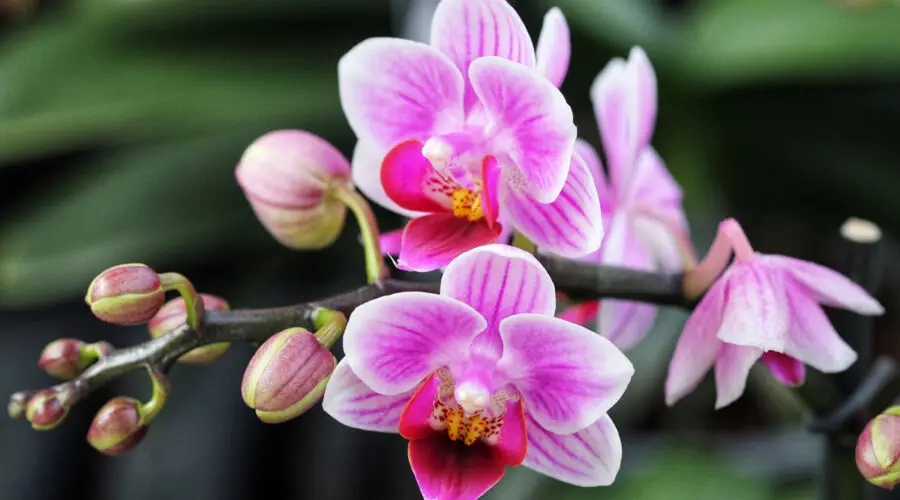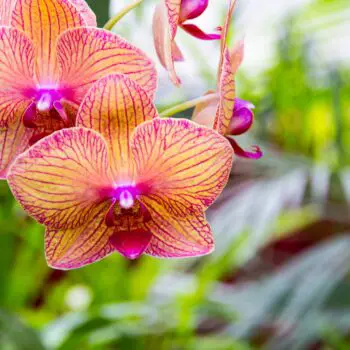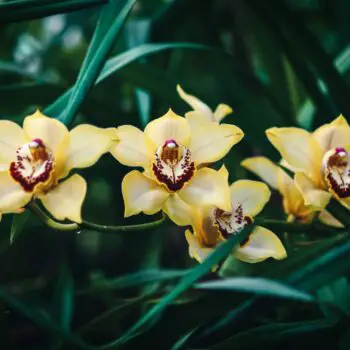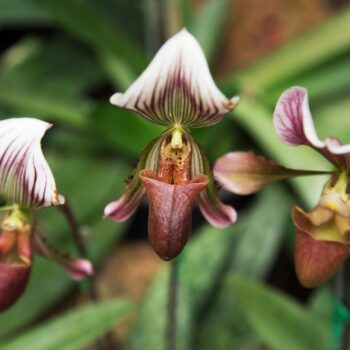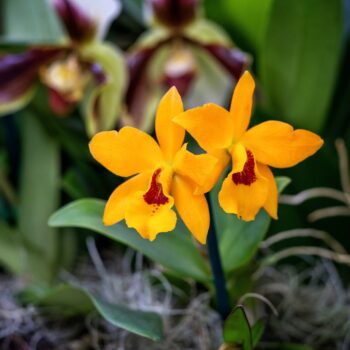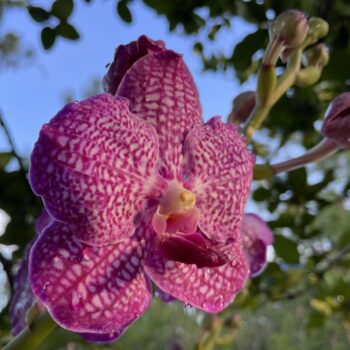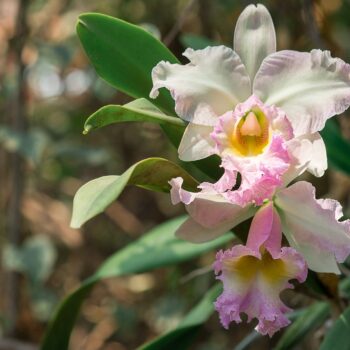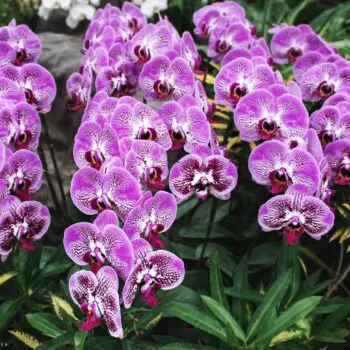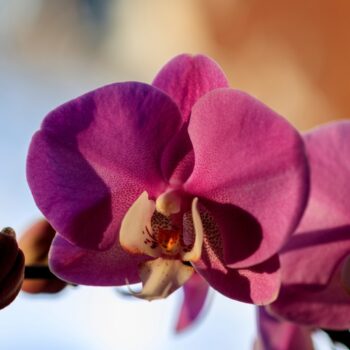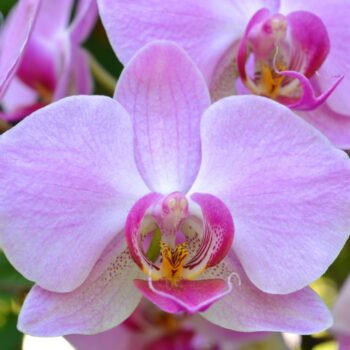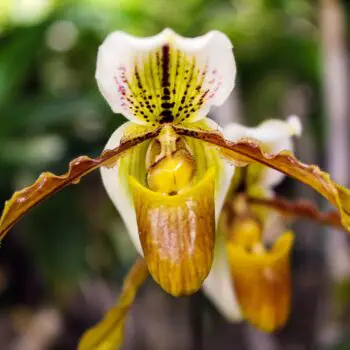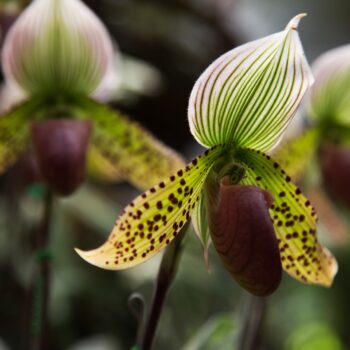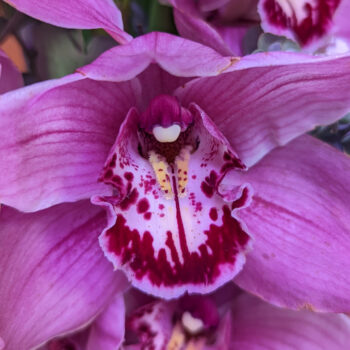The Amazing Family of Orchids
When it comes to flowers, there are millions of different options to choose from, but few compare to the amazing orchid. Whether you’re someone who’s just found their beauty, or a long-time connoisseur, let’s walk through the exciting world of orchids.
What Are Orchids?
Orchids are quickly recognized for their colorful, fragrant blooms that seem almost unreal in their perfection. They are in the family Orchidaceae, one of the largest and oldest plant families on the planet.
These elegant beauties come in a captivating array of natural colors, including white, yellow, pink, red, orange, and purple. Cultivated plants are often dyed blue or green too.
They are easily one of the most popular blooming florist plants worldwide, commonly grown as houseplants since potted plants bloom for months at a time. The blooms are also one of the longest-lasting cut flowers, which adds to their popularity.
What Makes Orchids So Unique?
Beyond their stunning appearance, orchids are incredibly unique.
- Orchids can be found all around the world. They have successfully conquered every environment on the planet, sans the driest deserts and frigid Antarctica.
- They are among the select few groups of flowering plants that have adapted to epiphytic niches, growing on tree trunks instead of soil.
- All orchid flowers are monosymmetrical. Regardless of the flower characteristics, both flower halves mirror the other.
- Unlike other plants that stop giving off oxygen at night, orchids produce oxygen when your shut the lights off. Adding an orchid to your bedroom can help reduce panic attacks, anxiety, and insomnia because of the extra oxygen production.
- Orchids demonstrate quantity over quality. Instead of a handful of seeds that are highly equipped to germinate, orchids produce thousands or millions of ill-equipped seeds to increase the odds of germination.
- Orchid seeds need help from particular fungi to germinate. Some plants form a symbiotic relationship with the fungi, giving back nutrients as a reward for the initial help. Still, others take advantage of the fungi their entire lives, pulling nutrients from them the whole time.
Understanding the Vastness of the Orchid Family
The Orchidaceae family is the second-largest flowering plant family behind Asteraceae, including sunflowers, daisies, and chrysanthemums. To better grasp the sheer number of orchids, it’s important to delve into taxonomy just a touch.
Plant taxonomy is a hierarchical system used to distinguish plants from one another, leading to a formal classification and their scientific name. All orchids are grouped in the same family and then divided into subfamilies, genera, species, varieties, cultivars, hybrids, etc.
How many orchid subfamilies are there on earth?
Sometimes a large family of plants is broken into subfamilies before being taxonomically categorized into genera. There are currently five recognized orchid subfamilies worldwide:
- Apostasioideae contains only two genera and fifteen species of the most primitive orchids on earth. They are mainly distributed across Northern Australia and Southeast Asia.
- Cypripedioideae includes five genera known as Lady Slipper orchids—Cypripedium, Mexipedilum, Paphiopedilum, Phragmipedium, and Selenipedium. They have slipper-shaped pouches on the flowers.
- Epidendroideae is the largest subfamily, with 576 genera and over 15,000 species. Most of the popular cultivated orchids are in this group.
- Orchidoideae is a natural grouping containing orchids with a single two-chambered anther attached to a viscidia or sticky pad in the flower. Most wild European orchids and cultivated Jewel Orchids are in this subfamily.
- Vanilloideae consists of 15 genera and about 180 species with incumbent anthers that lie against the side of a filament but only attach at one point.
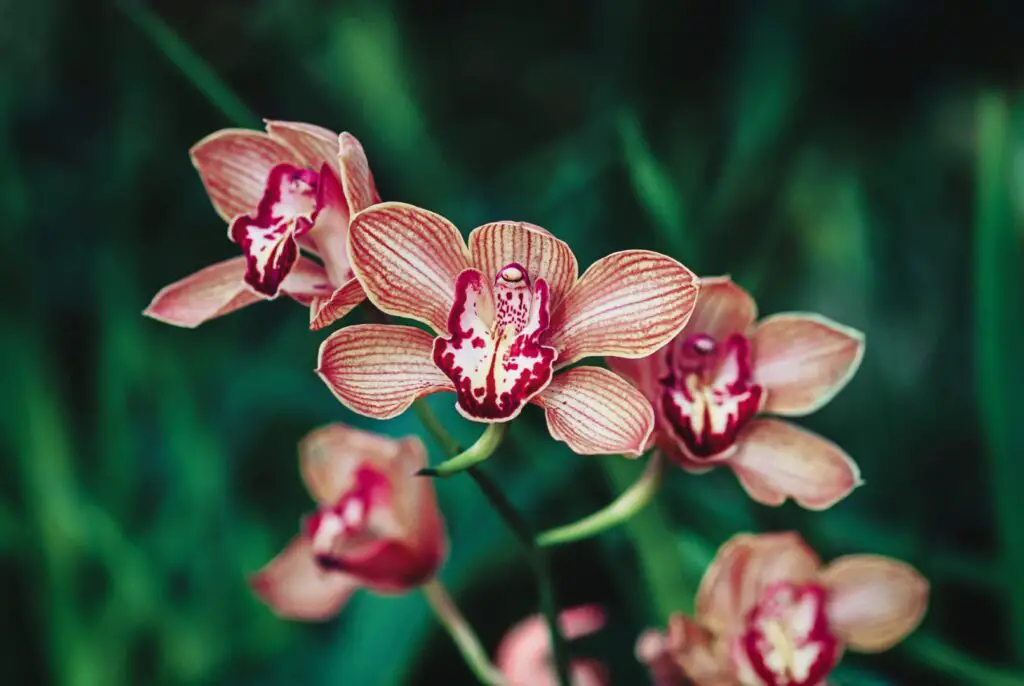
Cymbidium devonianum
How many orchid genera are there on earth?
Across the globe, there are nearly 900 different orchid genera within those five subfamilies. This number is astounding compared to the 30 genera in the stonecrop family, the 90 genera in the rose family, or the 338 genera in the brassica family.
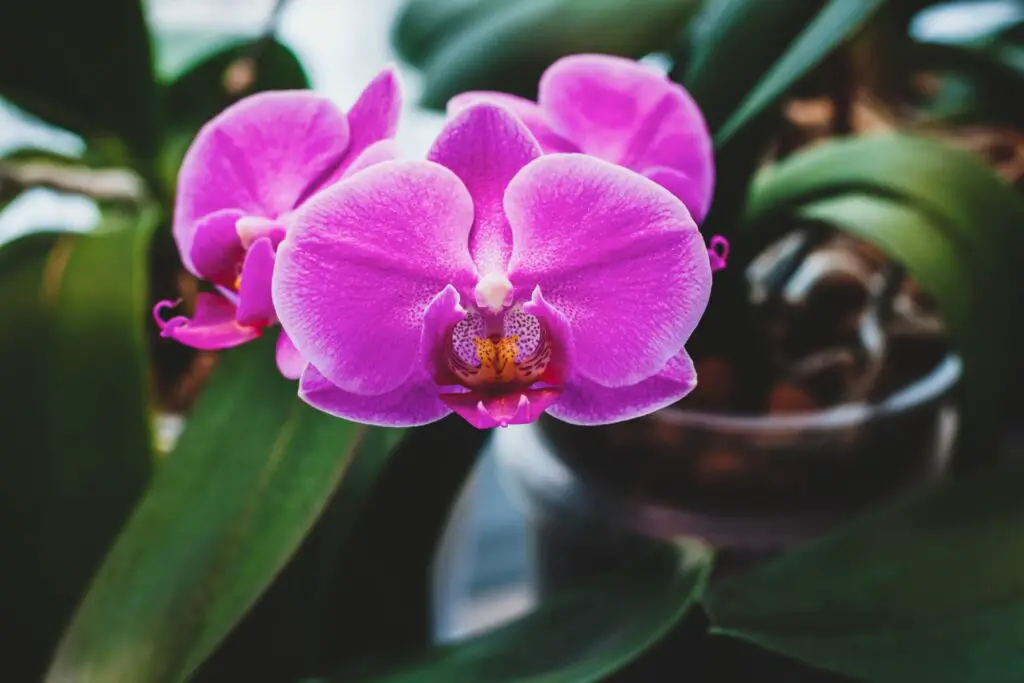
Phalaenopsis amabilis
Some of the most popular orchid genera are Cattleya, Cymbidium, Miltoniopsis, Cypripedium, Dendrobium, Epidendrum, Masdevallia, and Zygopetalum.
How many orchid species are there on earth?
Worldwide there are between 25,000 and 30,000 different orchid species of orchid. More than 10,000 of the species are found living wild in the tropics. The rest are cultivated in gardens or grown as container plants.
How many orchid hybrids and cultivars are there on earth?
There are about 120,000 orchid hybrids and cultivars worldwide.
Hybrids result from gardeners and hobbyists crossbreeding two or more genetically different parent plants and then growing the (unknown) resulting seeds. Cultivars are selectively bred using horticultural techniques to achieve specific characteristics.
Why are Orchids So Diverse?
With nearly 30,000 different orchid species, you’d expect plants to be similar, but orchids produce flowers with unprecedented diversity. This diversity stems from a great deal of deception on the orchids’ part.
An orchid’s pollen is incapable of floating freely through the air, so plants are entirely dependent on pollinators to move pollen from one flower to the next. Over their millions of years of evolution, their flowers have been modified to trick pollinators. This deceit lies at the bottom of the sheer volume of orchids worldwide.
It is thought that about one-third of known species are pollinated through food deception. The orchids attract pollinators to the flowers, but they don’t produce nectar, so the pollinator never gains a reward for their work.
Other orchid species are deceptive sexually. They mimic the mating signals of the females of the pollinator species to attract pollinators unknowingly.
How Are Orchids Classified?
The most confusing part about orchids is that many different factors are used to classify the different types. A single hybrid or species may have numerous classifications based on its characteristics.
Orchids are often classified by their native climate, their ecological adaptation, and how they grow.
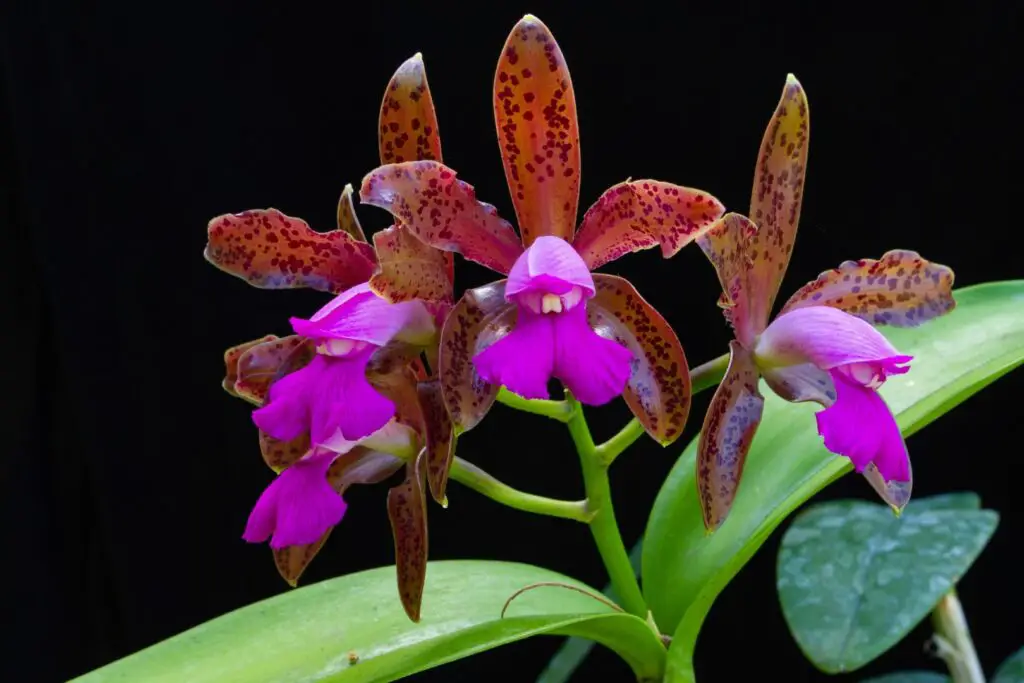
Cattleya tigrina
Different climatic classifications
All orchids are classified as per their preferred climatic conditions in which they can grow and thrive. There are three different types of climatic conditions used to classify orchids.
Cool-climate orchids are native to temperate climatic regions at high elevations. These orchids are frequently cooled by cloud cover.
Intermediate-climate orchids grow naturally in areas that aren’t too hot or too cold, typically between temperature and tropical zones.
Warm-climate orchids grow naturally in tropical, humid areas that see only slightly cooler temperatures in winter.
Classification based on ecological adaptation
Epiphytic orchids grow on tree surfaces instead of in the ground, gathering nutrients and moisture from the air and nearby organic surfaces. The majority of cultivated orchids are epiphytes.
Terrestrial orchids grow in the ground and exhibit the same ecological adaptations as other plants growing in soil.
Growth habit classifications
Monopodial orchids grow all their stems upwards from an apical meristem or growth point. They only activate lateral meristems if the apical shoot dies or when they produce lateral buds for inflorescences.
Sympodial orchids grow upwards from their apical meristem, but they activate lateral meristems for new growth when the stem reaches its final height.
Common Orchid Genera and Their Characteristics
| Genera | Species | Plant Characteristics | Climate | Habitat | ||
|---|---|---|---|---|---|---|
| Leaves | Flowers | Roots | ||||
| Brassavola | 18 | Single narrow leaf per pseudobulb | Single flower or cluster, borne at end of single stem per pseudobulb | Many fibrous roots, numerous aerial roots | warm | epiphytic |
| Cattleya | 120 | One or two leaves per pseudobulb at top of stem | Five to six flower stems, one per pseudobulb, with one flower per stem | Rhizome with pseudobulbs and aerial roots | warm | epiphytic |
| Dendrobium | 1000+ | Opposite, along the entire stem | Several long, slender pseudobulbs | Can grow aerial roots | cool | Epiphytic, terrestrial |
| Epidendrum | 1000+ | Alternate on stems, 2-3 per pseudobulb | Flowers borne on terminal spike | Long stems, or pseudobulbs with many aerial roots | warm | Epiphytic, terrestrial |
| Masdevallia | ~500 | 1 oval or lace-shaped leaf per pseudobulb | Typically 1 flower per inflorescence, sepals fused into tube-like structure | Pair of egg-shaped underground tubers | cool | Epiphytic, terrestrial |
| Miltoniopsis | 5 | 1 leaf at apex of pseudobulb | Multiple flower stems, one bloom at end of stem | Tightly clustered, flatter pseudotubers | interm | epiphytic |
| Oncidium | 300+ | 1-4 leaves per pseudobulb | Multiple long flower stems, with multiple blooms per stem | Distinctive round pseudobulb | interm | epiphytic |
| Paphiopedilum | 50+ | Sprout from roots, stay short | Single flower stem, flower spikes in between no leaves on side of stem | Small rhizome, no pseudobulbs or aerial roots | interm | terrestrial |
| Phalaenopsis | 75 | Broad, thick leaves on a central stem, opposite of each other | One to two flower spikes from central stem | Many aerial roots | warm | epiphytic |
| Vanda | 80 | Thick alternate leaves on erect stem | Many flowers clustered atop single flower stem | Large, robust aerial roots | warm | epiphytic |
| Zygopetalum | 14 | 2-3 long leaves from pseudobulb tip | Up to 8 flowers per inflorescence | Egg-shaped pseudobulbs | interm | epiphytic |
How to Grow and Care For Orchids
While many people think orchids are finicky to care for, they are pretty easy if you understand their basic needs.
Use the appropriate growing media
First and foremost, never try to grow orchids in garden soil or a standard potting mix—you’ll kill your plant. Orchids need a special growing media that drains incredibly well and has excellent airflow. They are commonly grown in specially-formulated orchid potting mix or chunky fir bark chips.
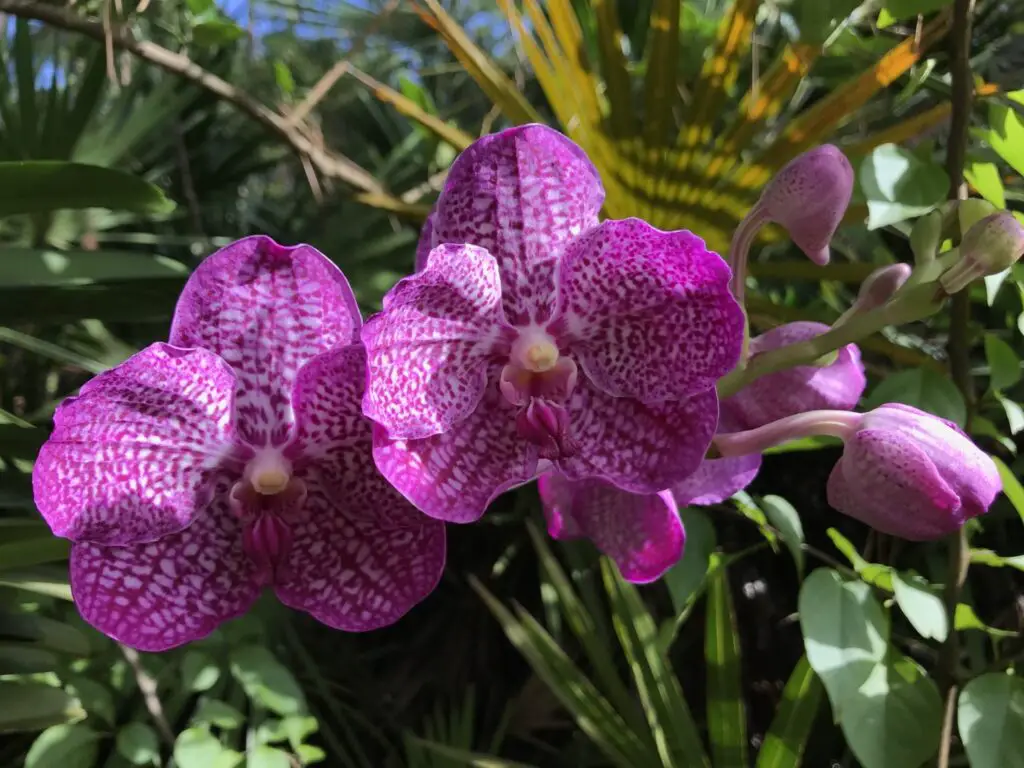
Vanda coerulescens
Choose the right container
The funny thing about orchids is they seem to thrive in what looks like ridiculously small pots. So when choosing a container, opt for the smallest one the roots fit in and then stake them plant until it’s established. Resist the urge to pot up unless it’s essential.
Many growers like using clear containers to see the orchid’s roots and monitor moisture levels easily.
Find the right location to meet its sunlight needs
Orchids are light-hungry plants, but they’re picky about the light intensity hitting their leaves and blooms. Set them close to an east or south-facing window where they can bask in 12 to 14 hours of indirect or diffuse light daily. Bright, direct sunlight burns your plant, and too little light will keep it from blooming.
Dial-In the temperature
Many orchids are happy hanging out inside, as we tend to keep our homes in the 70s range. But the exact temp your plant needs depends on the type you’re growing. Some like a little more heat, and some like it a little cooler. For many types, they need a slight drop in nighttime temperature to trigger flowering.
Get the watering “right”
Watering your orchid correctly is one of the most challenging parts of growing one. Like Goldilocks, they like the “right” amount of water—not too little and not too much. The best way to get that “right” amount is to water until the media is saturated (until it runs out the bottom of the container) and then don’t water again until the substrate is completely dry.
Balance relative humidity levels and air movement
Your orchid doesn’t want wet feet, but it likes high humidity. Finding the sweet spot might be challenging but using a pebble tray or grouping plants together is helpful. Your plant likes air movement, but too much dries it out. High humidity and little air circulation can lead to rot.
Feed your orchid according to its growth cycle
Fertilizer needs are directly related to your orchid’s growth cycle. Plants cycle through three distinct periods: active vegetative growth, flowering, and dormancy. In each period, an orchid has slightly different nutrient requirements.
- During active growth, fertilize your plants once a week or every other week. Many growers follow the “weakly, weekly” regimen and give their orchids a small fertilizer dose every week when watering instead of a full dose once a month.
- When orchids are blooming, do not fertilize them. At this time, they don’t need any extra nutrients, and fertilizer may cause blooms to drop.
- Once your plant stops blooming and goes into its resting period, feed it every two to four weeks at a quarter to half of the recommended dosage.
In terms of the fertilizer you use, you can buy orchid-specific plant food or choose an all-purpose fertilizer. If you opt for all-purpose plant food, look for a balanced product with a 10-10-10 or 20-20-20 ratio.
Are Orchids Toxic to Humans and Pets?
Even though there’s an urban myth floating around, most orchids pose no danger to you, your children, or your pets. Orchids in the Cypripedium subfamily—the ones known as Lady Slipper orchids—are mildly toxic and can cause skin irritation similar to poison ivy or digestive upset when ingested.
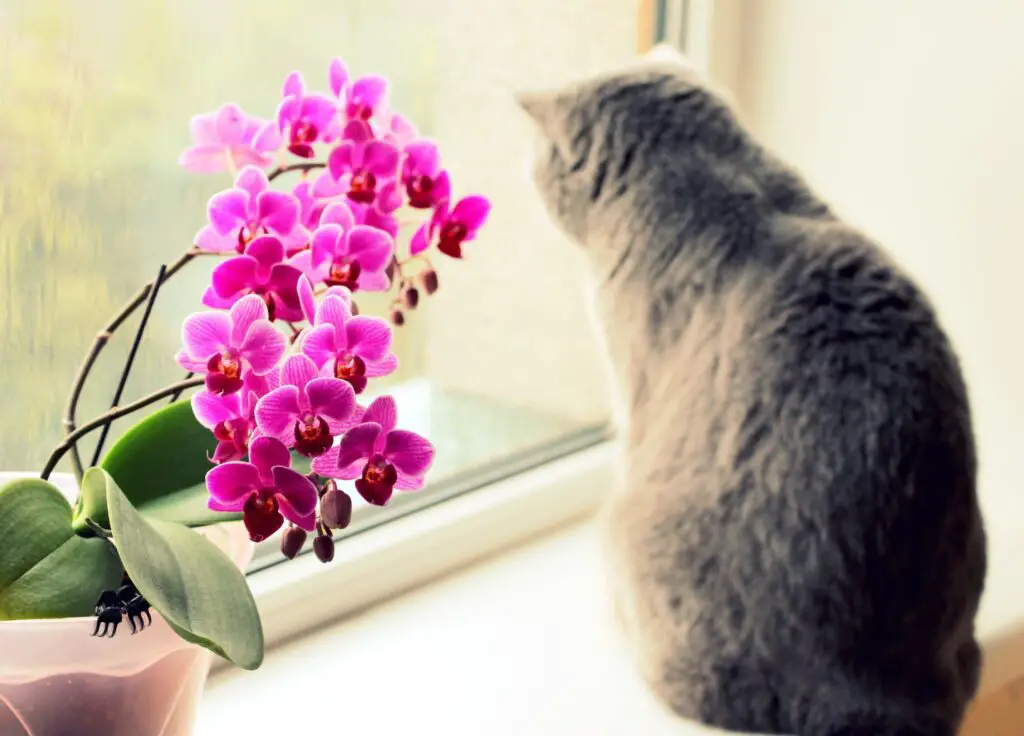
The danger with orchids comes from items besides the orchid itself.
- Fertilizers and other chemical treatments are harmful to pets and can damage their stomach lining if eaten.
- Redwood bark in the growing media irritates a pet’s nose and lungs.
- The blue or green dye used to color orchids may be harmful to your pet if it gets on their mucous membranes or is consumed.

